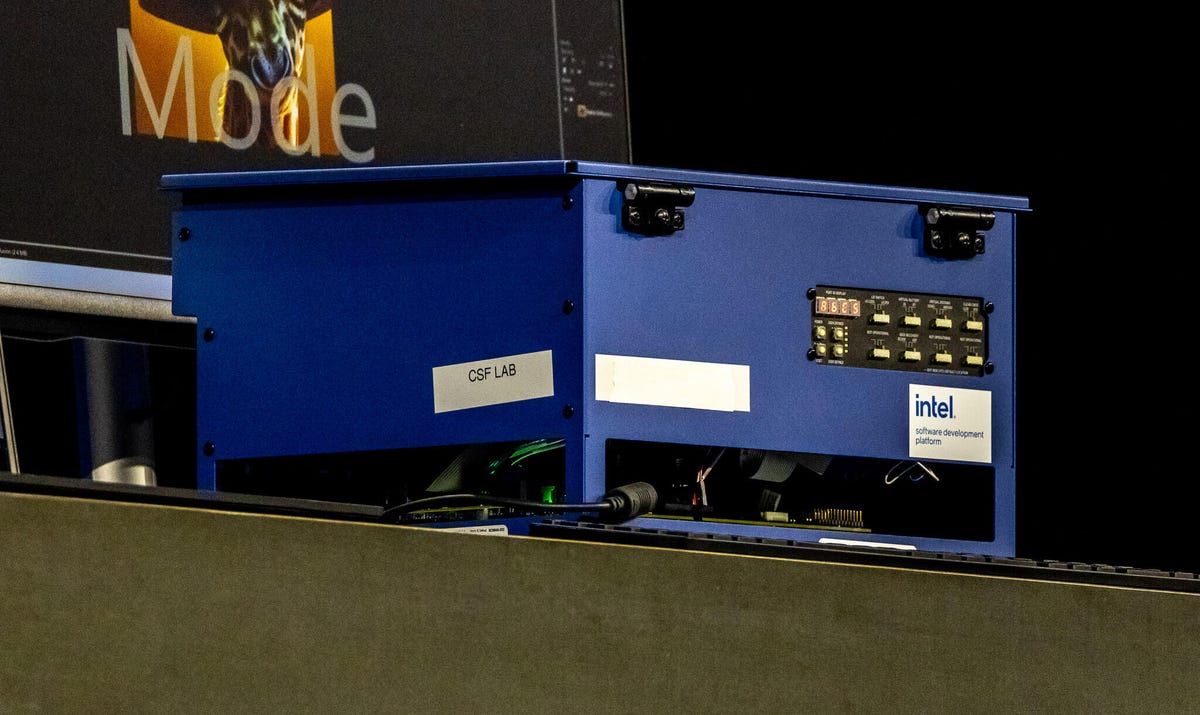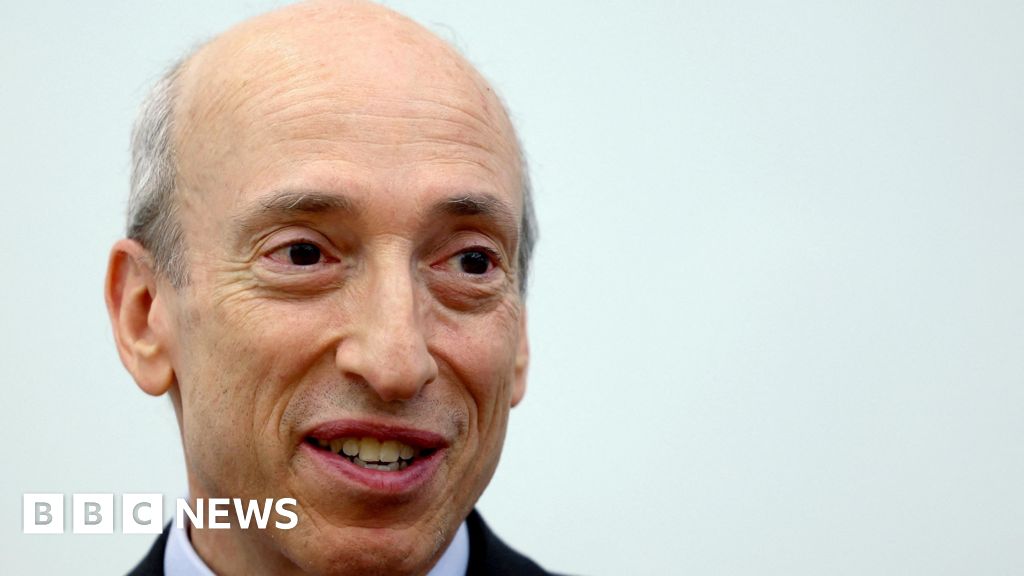On Tuesday, Intel hosted an event to showcase their upcoming processor, Meteor Lake, which will be available for sale on December 14. However, if you’re torn between sticking with an Intel-powered Windows laptop or switching to a powerful Apple MacBook, you might want to pay attention to the other three upcoming processors.
During Intel’s Innovation conference, CEO Pat Gelsinger unveiled a series of new processors that are scheduled to launch in 2024 and 2025. The first two are Arrow Lake and Lunar Lake, followed by Panther Lake in 2025. Gelsinger confirmed that Panther Lake’s design is already “well underway,” as rumored.
In an effort to demonstrate the capabilities of the new processors, Gelsinger showcased a prototype Lunar Lake computer. The device was an opaque blue box with the label “Lab CSF” and featured technical controls like “clear cache” and “virtual battery” that are not typically found on regular PCs. The prototype was equipped with an Intel-built 18A chip, a manufacturing process aimed at reclaiming Intel’s chipmaking leadership.
See also: Inside Intel’s Chip Factory, I Witnessed the Future: Plain Old Glass
According to CCS Insight analyst James Sanders, these technical demonstrations reflect Intel’s ongoing efforts to bounce back after years of struggling. He notes that there is a clear emphasis on showcasing Intel as an engineering-focused company, a reputation they are trying to rebuild after being run by accountants for a significant period of time.
At the Intel Innovation Summit, Intel showcased a prototype PC powered by the Lunar Lake processor and demonstrated AI software.
Intel used to supply processors for Apple’s Mac computers, but Apple has since transitioned to their own M-series chips. The M1 and M2 MacBooks have proven to be faster and offer longer battery life, prompting Intel to acknowledge the need to improve in those areas. While Intel hasn’t provided many details about the Meteor Lake processors, the company promises enhancements in processing power, graphics, and AI performance.
In the progression from Meteor Lake to Panther Lake, Intel aims to showcase the performance of its processors against competitors, including Apple, in three key areas: CPUs (central processing units), GPUs (graphics processing units), and NPUs (neural processing units) for AI acceleration, all within a designated power budget. Gelsinger confidently stated during a press conference that Intel believes these platforms offer the best performance, surpassing what Mac or any other competitor can provide. He expressed confidence in Intel’s roadmap for the future.
Apple has not yet responded to requests for comment on Intel’s latest developments.
Intel’s Fabrication Process for Panther Lake
Gelsinger revealed that Intel’s fabrication facility, known as the “fabric,” is expected to commence production of the first Panther Lake processors in the first quarter of 2024. These processors will be manufactured using Intel’s 18A process, which represents the final step in their five-node progression within four years.
At the Intel Innovation Summit, CEO Pat Gelsinger showcases a wafer created using Intel’s 18A manufacturing process, which is integral to their chip manufacturing recovery plan.
In addition to processors, Intel also introduced new Xeon processors for data centers, announced that Stability.ai would acquire their Gaudi AI accelerators, and presented a new glass layer technology that holds the promise of faster and more powerful processors in the future.
AI processors are currently the largest processors in the world due to the growing demand for AI technology. While NVIDIA has been the primary beneficiary of this trend, Intel revealed that Stability.ai, an AI graphics company, will purchase AI computers featuring Xeon processors with 4,000 Gaudi AI accelerators.
New Advancements in Intel’s Chip Manufacturing
Intel is catching up with its competitors in the field of chip manufacturing by utilizing extreme ultraviolet (EUV) light to deposit superior materials onto silicon chips. They are also working on the next advancement, known as high numerical aperture (high NA) EUV, with the aim of writing smaller transistors and fitting more onto a processor. However, this advanced EUV process comes with a trade-off: the size of the processor it can produce is only half that of conventional EUV. To compensate, processor manufacturers can pack multiple “chiplets” into a single package.
Gelsinger announced that Intel expects to have the first EUV machine for high-end chipmaking by the end of 2023, and the sole supplier of this technology is the Dutch company ASML. While Intel’s 18A process can utilize NA, chips can also be manufactured using conventional EUV with additional steps in the process.
Intel is developing glass panels as an upgrade to the material beneath the processor that connects to the motherboard. Gelsinger is seen holding a transparent 300mm glass wafer dotted with processors.
Gelsinger has been discussing Intel’s five-in-four plans for over two years, which include Intel 7, Intel 4, Intel 3, Intel 20A, and Intel 18A. At the Innovation conference, he revealed three additional steps beyond 18A in their processor design roadmap. Intel 20A and 18A utilize a gate-in-circuit technology called RibbonFET to enhance transistor performance while keeping Moore’s Law in check. They also incorporate PowerVia, a power management solution. Intel is currently working on new versions of both technologies.
Gelsinger stated that there are three types of chip makers: “You’re big, you’re niche, or you’re dead.” Intel is striving to accelerate progress in chipmaking to avoid being squeezed out and becoming obsolete, a fate faced by IBM and AMD in recent years.
“Intel is too big to move fast,” Gelsinger acknowledged. “But we won’t be too big to fail.”
I Explored Intel’s Glass Packaging Tech for Faster Chips
See all photos













